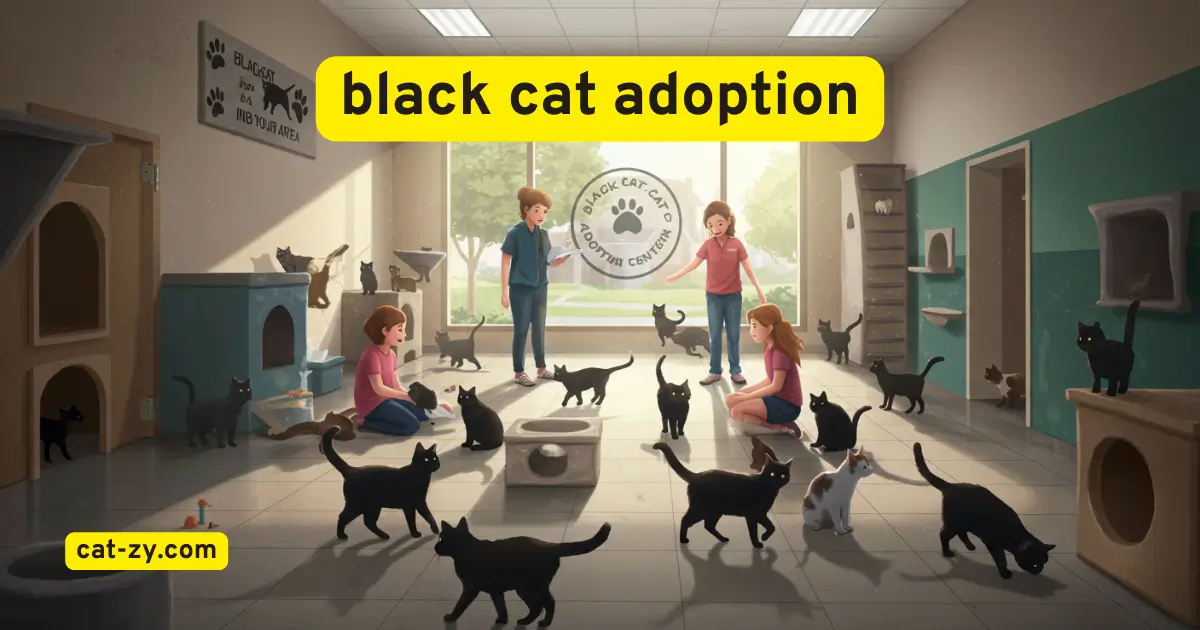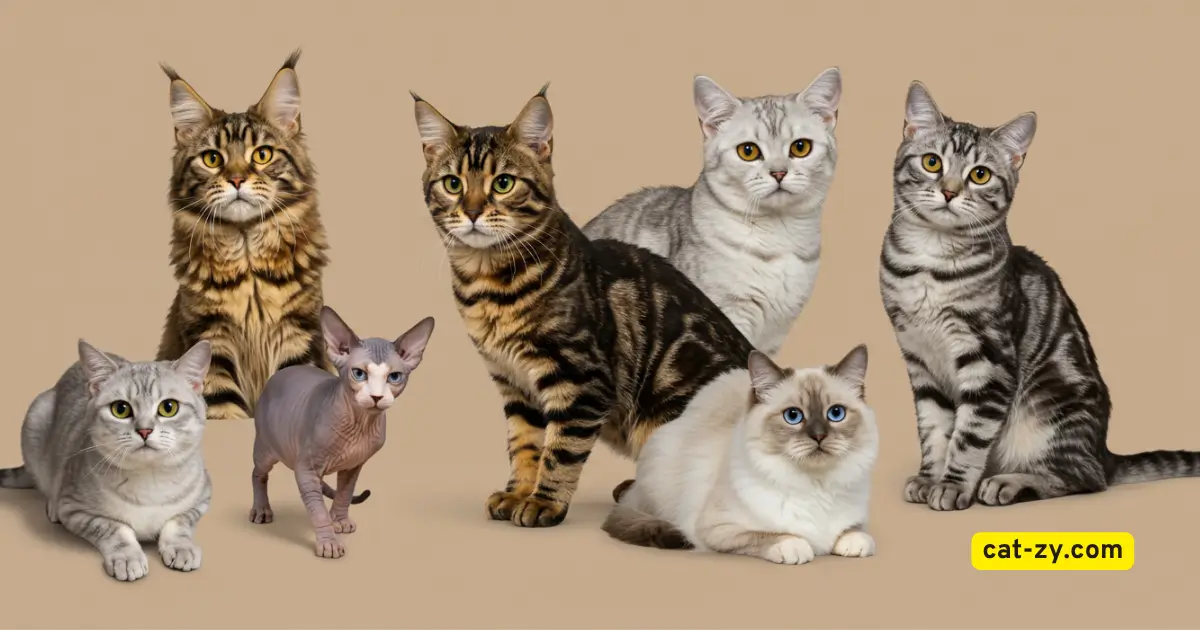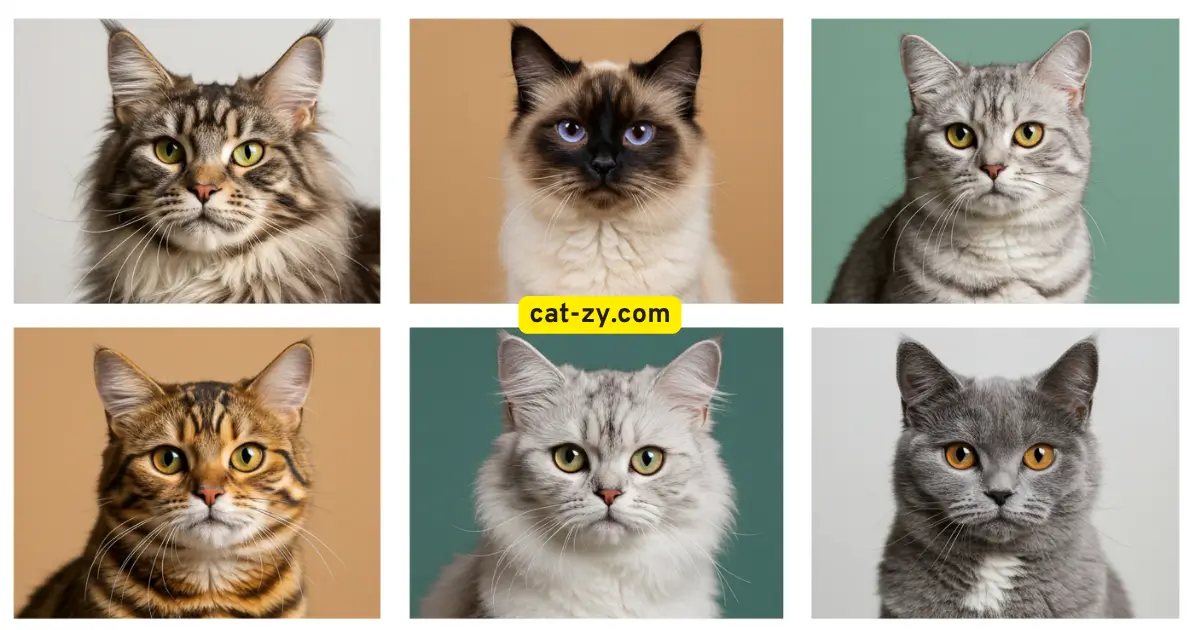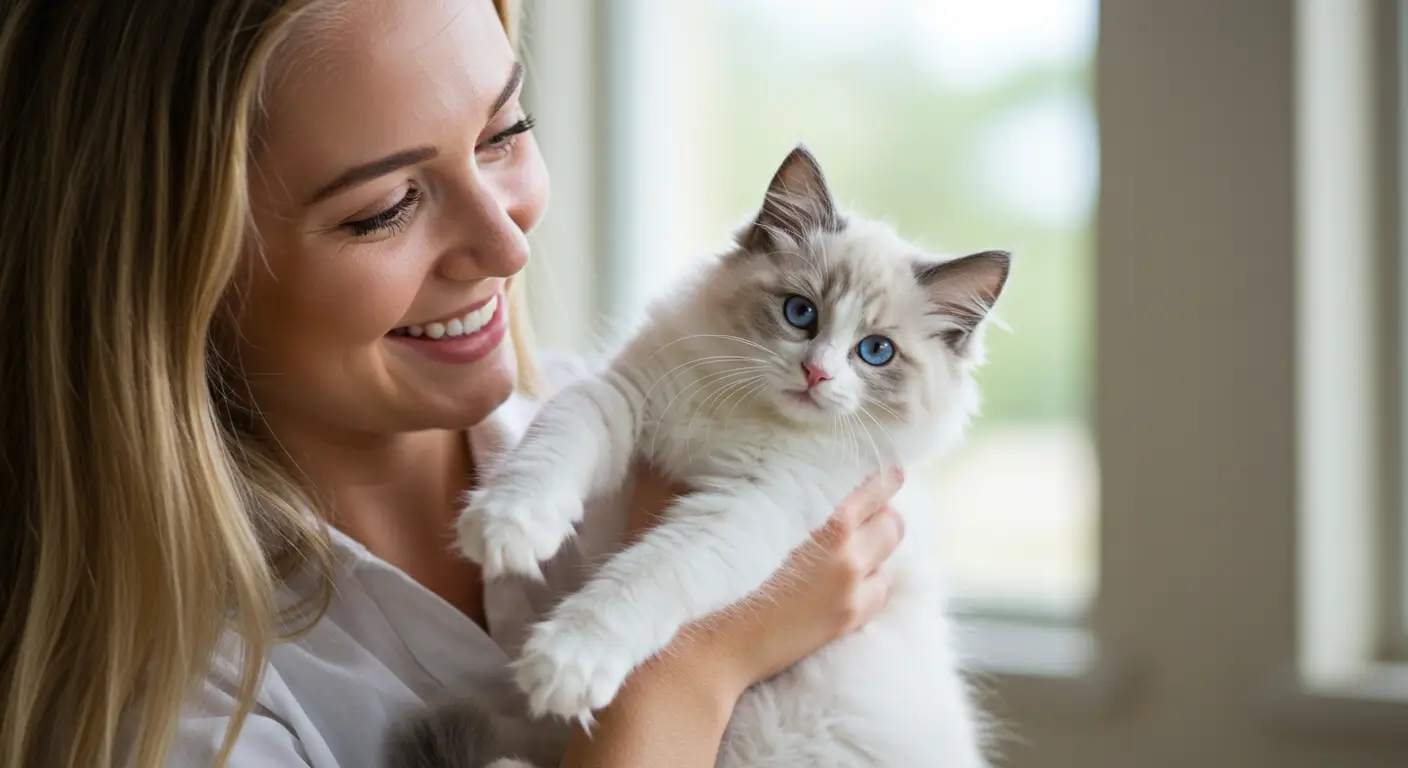Top 5 Hypoallergenic Cats for Adoption You’ll Love!
Do you love cats but avoid them because of allergies? You’re not alone. Millions dream of sharing their homes with feline companions but worry about sneezing, itching, or watery eyes. What if I told you that finding a purrfect match is possible? With hypoallergenic cats for adoption, that dream is closer than you think.
This guide reveals the top five breeds designed to coexist with sensitive noses. These cats aren’t just low-shedding or rare—they’re real pets offering endless affection without sacrificing your comfort. Let’s discover how adopting one of these special animals can turn your dream of cat ownership into reality.
Table of Contents
Understanding Hypoallergenic Cats & What It Means
Choosing hypoallergenic cats for adoption means knowing their unique traits. Allergies often stem from a protein in cat saliva and dander. This section will clear up the science and myths behind these breeds.
What Does Hypoallergenic Mean?
Hypoallergenic cats produce fewer allergens. Low allergen cats release less Fel d 1, a protein that causes reactions. But, no breed is completely allergen-free. The term helps identify breeds with lower risk.
Common Misconceptions
Many think hypoallergenic cats for adoption mean no reactions. But, this isn’t always true—sensitivity varies. Another myth: frequent baths alone make any cat hypoallergenic. Genetics, not grooming, determine allergen levels.
The Science Behind Allergen Reduction
Scientists study Fel d 1, the protein that triggers allergies. hypoallergenic cats for adoption naturally shed less of this protein. Regular cleaning and air filters help, but their genetic traits are the main factor in reducing exposure.
Benefits of Adopting Hypoallergenic Cats
Adopting hypoallergenic cats for adoption brings numerous benefits, especially for allergy sufferers who want to experience the joy of having a pet without the usual discomfort. These cats make fewer allergens, like Fel d 1, which means less sneezing and itchy eyes for you.
Having non-allergenic cats makes your home easier to keep clean. Their low-shedding fur means less dander, so you don’t have to vacuum and dust as much. Plus, grooming your cat catches loose fur, making cleaning up a breeze.
These pets bring joy and comfort to your life. They can be playful or calm, helping you feel less lonely and improving your mood. Studies show that petting a cat can lower stress hormones. With hypoallergenic breeds, you get all the benefits without the health risks. Plus, adopting a cat helps animal shelters by giving a loving home to a cat in need.
Preparing Your Home for a Hypoallergenic Companion
Getting allergy safe cats means making your home safe for them and you. Start by cleaning surfaces, improving air flow, and changing how you clean. These small steps can make a big difference.
Creating Allergen-Reduced Spaces
Choose smooth floors like tile or hardwood to cut down on dander. Swap carpets for washable rugs and use air purifiers in key areas. Make bedrooms pet-free to keep them clean.
Use washable curtains instead of heavy drapes to avoid dust.
Maintenance and Cleaning Tips
Vacuum floors weekly with a HEPA-filter vacuum to catch allergens. Clean surfaces daily with microfiber cloths. Wash bedding and pet bedding in hot water every 7-10 days.
Run air purifiers all the time to keep the air clean for allergy safe cats.
Choosing the Right Supplies
Choose hypoallergenic litter like corn-based types to reduce dust. Use microfiber cloths made for pet allergen removal. Get a HEPA air purifier from brands like Blueair or Rabbit Air.
Wash fabrics often with laundry detergents made for pet owners, like Allersearch ADMS.
Where to Find Hypoallergenic Cats for Adoption
Starting your search for cat adoption for allergy sufferers means doing your homework. Look for groups that focus on low-allergy breeds like the Balinese or Cornish Rex. Places like PetFinder or ASPCA have lists of shelters with health records and breed info.
Make sure the agency talks about how they check the cats. They should test for dander and health. This ensures the cat is safe for you.
Check out what others say about the agency. Look for reviews from people with allergies. Groups like Cat Fanciers’ Association often share stories of successful adoptions for allergy sufferers.
See if the agency offers a chance to meet the cats before adopting. Places like Humane Society have meet-and-greet sessions. This lets you see if the cat is a good fit for you.
It’s important to know about the cat’s past and health. Good agencies will tell you all about it. They should also explain how they keep the cat’s living area clean to reduce allergens.
Essential Tips for Finding hypoallergenic cats for adoption
Bringing a hypoallergenic cat into your home starts with careful evaluation. Here’s how to ensure a perfect match:
Evaluating Health and Temperament
Look for cats with clear eyes, clean coats, and calm behaviors. Healthy hypoallergenic cats often show curiosity without aggression. Ask agencies to share medical records, including allergy-related health screenings. A cat’s temperament reflects its suitability for your lifestyle—observe how it interacts with others.
Meeting and Greeting Best Practices
When visiting adoption centers, spend time with the cat in a quiet space. Watch how it responds to touch and movement. Some hypoallergenic breeds like the Balinese or Sphynx may need extra attention to assess their comfort levels. Use this time to gauge compatibility with your household environment.
Questions to Ask Adoption Agencies
Ask about the cat’s health history, including FELV tests and grooming routines. Inquire how the agency identifies hypoallergenic traits and if they provide post-adoption support. Key questions include: “Are allergy tests conducted on all cats?” and “What guarantees do you offer for temperament compatibility?”
Health Considerations and Allergen Management
Regular veterinary care is key for your hypoallergenic cat’s health. Make sure to schedule annual checkups. This ensures they get the right vaccinations and stay healthy.
Even though they are hypoallergenic, they still need regular vet visits. This helps keep them strong and reduces dander.
Managing allergens is a big job. Use a HEPA air purifier to clean the air. Also, groom your cat weekly. Brushing them outside helps keep fur out of your home.
Wash their bedding and vacuum with a HEPA vacuum. This traps allergens well.
If you still have allergy symptoms, see an allergist. They can help with antihistamines or other treatments. Use hypoallergenic laundry and mattress covers to block allergens.
Keep your cat out of bedrooms to reduce dander. Bathing them with vet-approved shampoo also helps. Always check with your vet before trying new grooming products or diets.
No cat is completely free from allergens, even hypoallergenic ones. But, with the right care, you can keep your home healthy. Keep up with cleaning and vet visits to create a balanced living space.
Conclusion
Adopting hypoallergenic cats for adoption can be a life-changing experience for allergy sufferers who dream of having a pet. This guide highlighted five incredible breeds that are known for producing fewer allergens—offering you companionship without the constant sneezing.
From learning about allergen management to finding trusted adoption agencies, every step brings you closer to welcoming your perfect feline friend. While no cat is 100% allergen-free, these hypoallergenic breeds offer a safer choice for sensitive individuals.
So, if you’re ready to embrace the joy of cat ownership without the discomfort, start exploring options for hypoallergenic cats for adoption today. Your ideal cat is out there—waiting to meet you.
FAQ
What are hypoallergenic cats?
Hypoallergenic cats are breeds that make fewer allergens than regular cats. They are great for people with allergies. They help reduce allergic reactions and make better pets.
Do hypoallergenic cats still cause allergies?
Yes, hypoallergenic cats still have allergens. They just make less of them. Always talk to an allergist before getting one to make sure it’s safe for you.
Which cat breeds are considered hypoallergenic?
Popular hypoallergenic cat breeds include the Siberian, Balinese, and Devon Rex. These cats produce fewer allergens, making them a great choice for individuals with allergies.
How can I prepare my home for a hypoallergenic cat?
To get ready for a hypoallergenic cat, make your home allergen-free. Clean regularly and use air purifiers. Choose covers that trap allergens.
What should I ask when contacting an adoption agency?
When you contact an adoption agency, ask about the cat’s health and personality. Find out about their medical history and grooming needs. Also, ask about their return policy if you have allergies.
What health considerations should I keep in mind for my hypoallergenic cat?
Keeping your cat healthy is key. Make sure they get regular vet visits and vaccinations. Also, take care of their teeth and feed them well to reduce allergens.
Are hypoallergenic cats good for families?
Yes, hypoallergenic cats are great for families with allergies. They are loving and affectionate, with fewer allergy problems.
How do I find a trusted adoption agency specializing in hypoallergenic cats?
Look for local animal shelters or rescues. Read online reviews and ask friends for recommendations. Make sure they have a good vetting process and support after adoption.








3 Comments